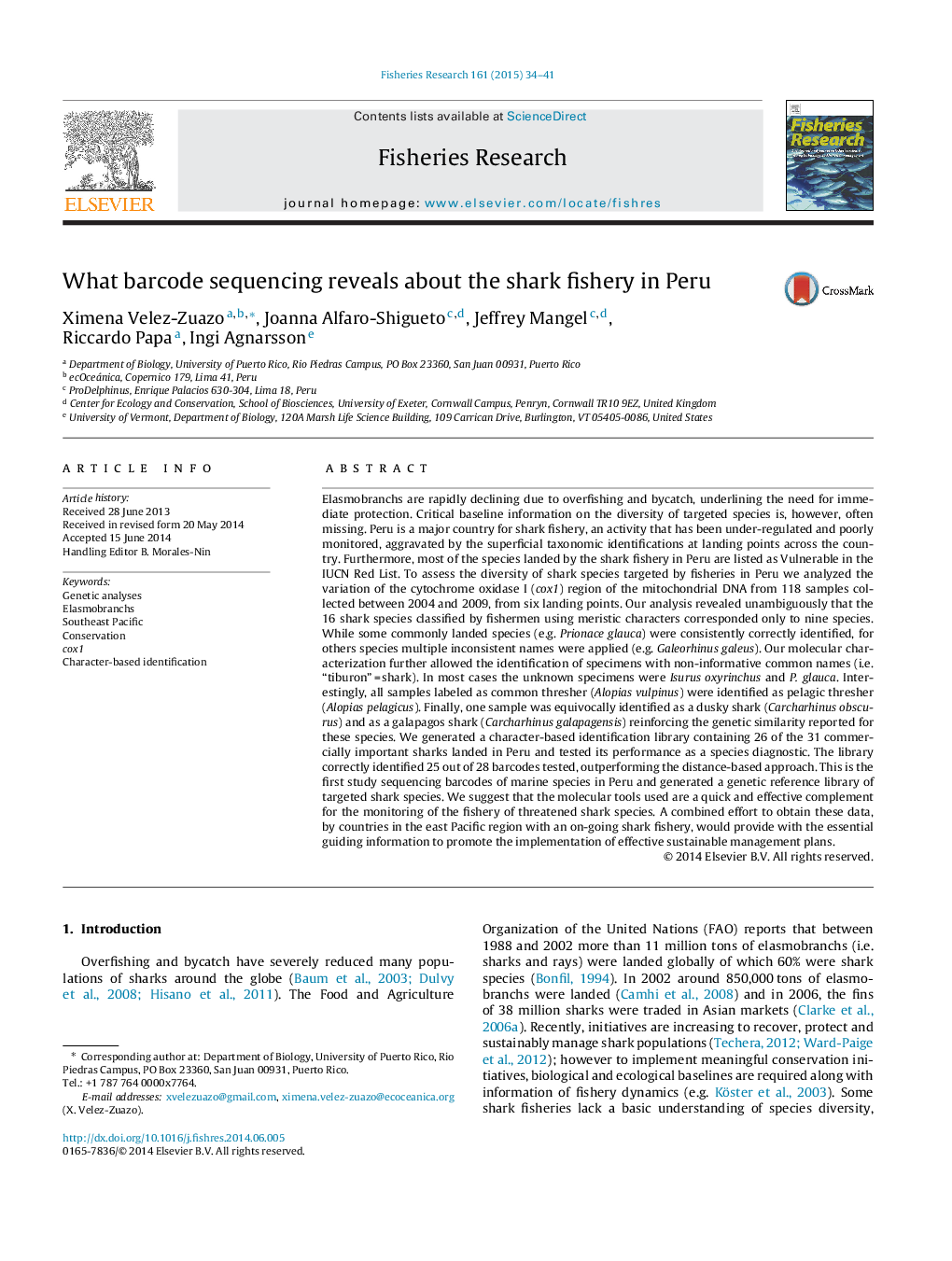| Article ID | Journal | Published Year | Pages | File Type |
|---|---|---|---|---|
| 6385769 | Fisheries Research | 2015 | 8 Pages |
Abstract
Elasmobranchs are rapidly declining due to overfishing and bycatch, underlining the need for immediate protection. Critical baseline information on the diversity of targeted species is, however, often missing. Peru is a major country for shark fishery, an activity that has been under-regulated and poorly monitored, aggravated by the superficial taxonomic identifications at landing points across the country. Furthermore, most of the species landed by the shark fishery in Peru are listed as Vulnerable in the IUCN Red List. To assess the diversity of shark species targeted by fisheries in Peru we analyzed the variation of the cytochrome oxidase I (cox1) region of the mitochondrial DNA from 118 samples collected between 2004 and 2009, from six landing points. Our analysis revealed unambiguously that the 16 shark species classified by fishermen using meristic characters corresponded only to nine species. While some commonly landed species (e.g. Prionace glauca) were consistently correctly identified, for others species multiple inconsistent names were applied (e.g. Galeorhinus galeus). Our molecular characterization further allowed the identification of specimens with non-informative common names (i.e. “tiburon” = shark). In most cases the unknown specimens were Isurus oxyrinchus and P. glauca. Interestingly, all samples labeled as common thresher (Alopias vulpinus) were identified as pelagic thresher (Alopias pelagicus). Finally, one sample was equivocally identified as a dusky shark (Carcharhinus obscurus) and as a galapagos shark (Carcharhinus galapagensis) reinforcing the genetic similarity reported for these species. We generated a character-based identification library containing 26 of the 31 commercially important sharks landed in Peru and tested its performance as a species diagnostic. The library correctly identified 25 out of 28 barcodes tested, outperforming the distance-based approach. This is the first study sequencing barcodes of marine species in Peru and generated a genetic reference library of targeted shark species. We suggest that the molecular tools used are a quick and effective complement for the monitoring of the fishery of threatened shark species. A combined effort to obtain these data, by countries in the east Pacific region with an on-going shark fishery, would provide with the essential guiding information to promote the implementation of effective sustainable management plans.
Related Topics
Life Sciences
Agricultural and Biological Sciences
Aquatic Science
Authors
Ximena Velez-Zuazo, Joanna Alfaro-Shigueto, Jeffrey Mangel, Riccardo Papa, Ingi Agnarsson,
